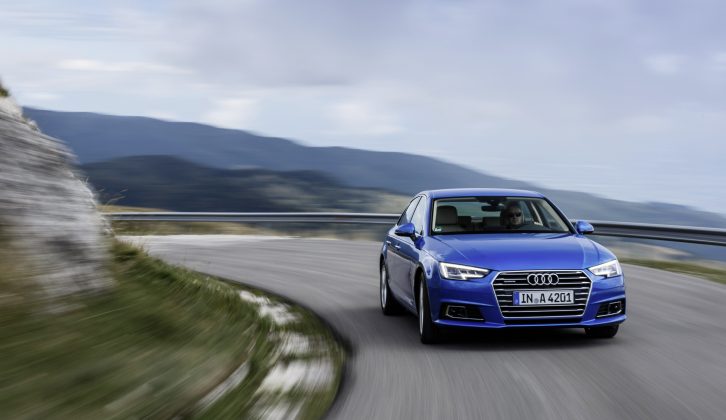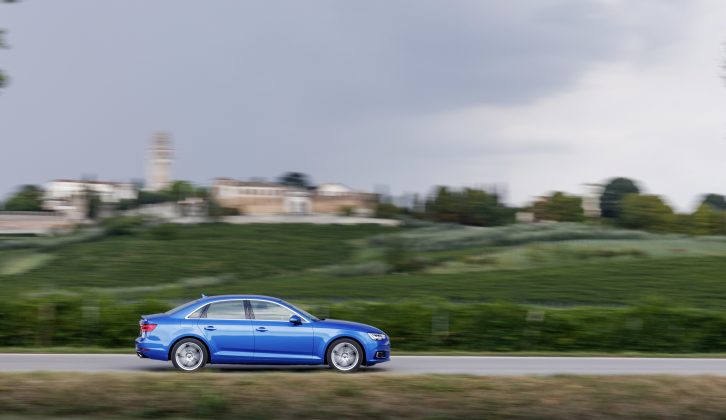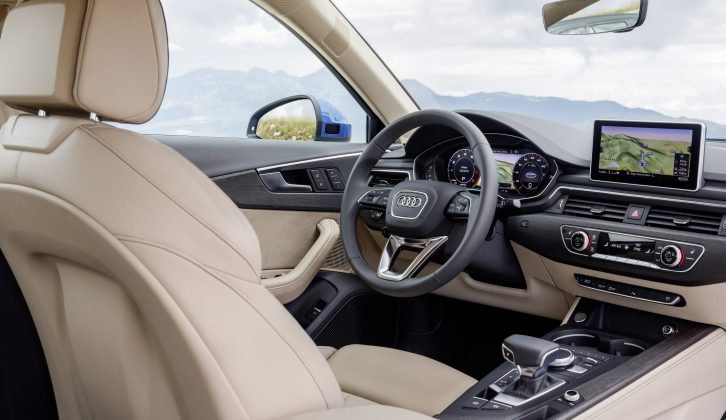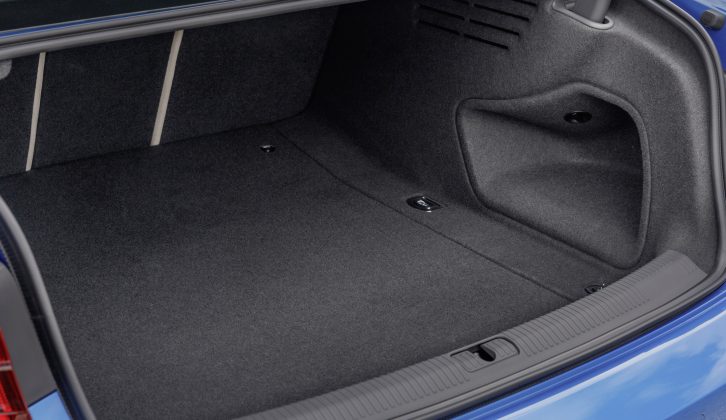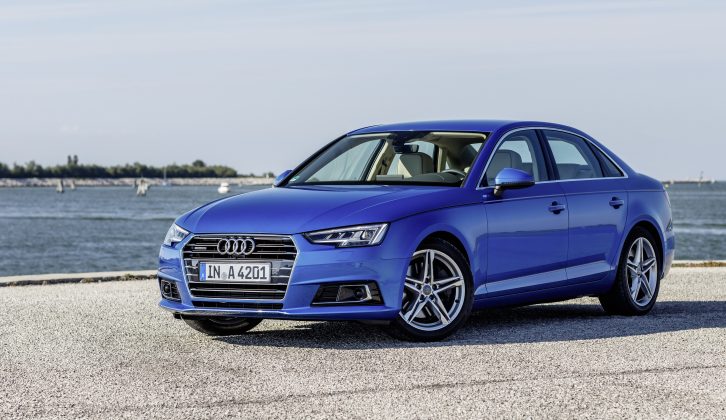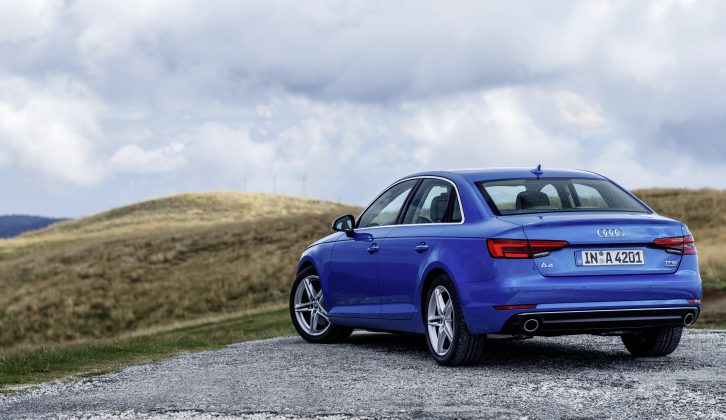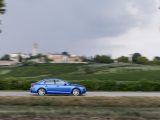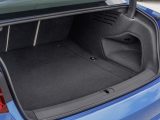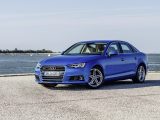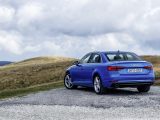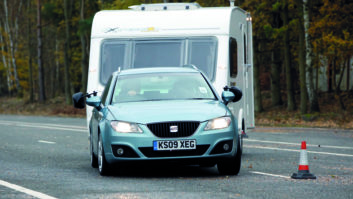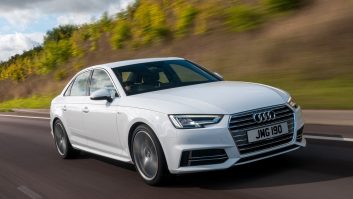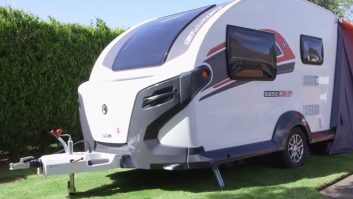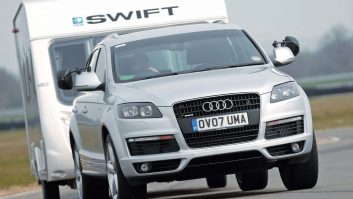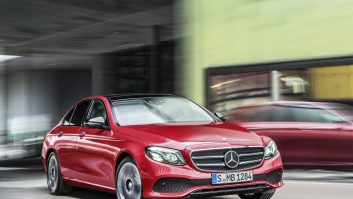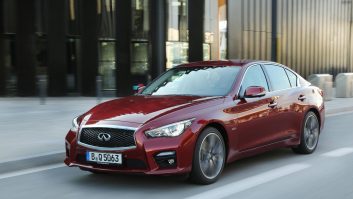The new Audi A4 is lighter, more fuel-efficient and more enjoyable to drive than before. Will it make a better tow car? The answer will have to wait a while, partly because Audi’s efforts in reducing the car’s weight mean matching ratios aren’t so favourable, but mostly because we won’t have the chance to tow with the A4 for a few months. However, in everyday driving it’s emphatically a much-improved car.
The new look doesn’t really do the A4 justice. It’s not that it isn’t a handsome, well-proportioned car, just that it appears more like a facelift than an all-new model. The conservative and predictable styling undersell what’s under the skin – some 90% of components are new.
A new platform lops up to 110kg from the weight of the saloon and 120kg from the Avant (estate). Combine the lighter build with improved aerodynamics, new and improved engines and redeveloped transmissions, and Audi claims the A4 is up to 21% more economical than before.
There’s a choice of seven engines. The diesels are most likely to appeal to caravanners, starting with a 2.0-litre 150PS (148bhp) engine. There’s also a 190PS (187bhp) unit with the same capacity, and 3.0-litre V6 engines with either 218PS (215bhp) or 272PS (268bhp).
Even if most tow car drivers will opt for a TDI, Audi’s TFSI petrol engines are worth a look. Turbocharging means there’s more mid-range muscle than you’d expect from petrol power, with outputs of 150PS (148bhp), 190PS (187bhp) and 252PS (249bhp).
The 190PS 2.0-litre TDI looks like a good bet for towing duties, and that’s the car we spent most time driving. With a kerbweight of 1505kg it’s light: the 85% match figure is 1279kg. But for an experienced caravanner looking to tow between 85% and 100% of the kerbweight (which both major caravanning clubs consider acceptable), then the Audi A4 can be matched to a reasonable range of tourers. The legal towing limit on a 12% gradient is 1700kg, and the maximum noseweight on this and all other models is 80kg.
It should have absolutely no trouble towing any prudently matched caravan. Even driving up steep mountain roads the engine pulled cleanly from low revs, and with real urgency when peak torque of 295lb ft arrives at 1750rpm.
The engine is smooth and quiet, too. In fact, the new A4’s most obvious strength is its refinement. At motorway speeds the cabin is as quiet as a library, with no more than a distant hum from under the bonnet, and very little wind and road noise on smoothly surfaced roads.
We also drove the 2.0 TFSI engine with the same power output. What’s surprising is just how much torque it has. There’s 236lb ft, as much as many 2.0-litre diesels can muster, delivered from just 1450rpm all the way to 4200rpm. It makes for a very smooth, flexible engine. You get the refinement and punchy high-rev performance of a good petrol engine, but with mid-range acceleration to rival a diesel.
The petrol model is some 50kg lighter than the 190PS diesel at 1455kg, so the 85% match figure drops to 1237kg. It’s also less economical, with a combined economy of 50.4mpg rather than 72.4mpg. Even so, with a price tag £2350 lower than the diesel’s, it would be wise to give the TFSI serious consideration.
We also took a steer in the less powerful 150PS 2.0-litre TFSI Audi A4. Again, in a type of car in which diesel is the norm, it makes a strong case for filling up at the green pumps instead. With 184lb ft of mid-range pulling power it’s no slouch; it’s more the featherweight 1395kg kerbweight that counts against it, when considering what tow car potential it might have.
Close to the opposite end of the scale in terms of weight and performance is the 218PS 3.0-litre TDI. The six-cylinder soundtrack rests easier on the ear than the bland note of the four-cylinder diesel, and the step up in performance is immediately apparent. It’s effortlessly quick, and well-matched to the smooth-shifting seven-speed S tronic gearbox. In front-wheel-drive form, this model has a kerbweight of 1695kg and a legal towing limit on a 12% gradient of 1800kg.
All the cars we drove were front-wheel drive, but as you’d expect of Audi, quattro four-wheel-drive versions will also be available. Engine choice is restricted to the most powerful petrol and the three most powerful diesels. As well as offering improved traction for all-weather towing, quattro models are also that bit heavier: the range-topping 272PS diesel weighs 1735kg, giving an 85% match figure of 1475kg. The legal towing limit on a 12% slope is 1900kg.
While working to boost power and lower emissions, Audi’s engineers have also turned their attention to improving the old model’s lack-lustre ride and handling. There are now four types of suspension on offer. The standard set up uses conventional dampers, as does the sport suspension which is firmer and 23mm (nearly an inch) lower.
There are also comfort and sports suspension set ups with adaptive damping, which allows the driver to choose between different settings for a sportier or more comfortable drive using the Audi Drive Select system. The adaptive systems cost £900 on SE and Sport models and £600 on top-spec S line cars. Drive Select also varies throttle response, the weight and speed of the steering, and the behaviour of the automatic gearbox.
All the cars we drove had variable damping in either the comfort or sport guise. Of the two, we preferred comfort, which we suspect will be better suited to poorly surfaced British roads than the slightly more aggressive feel of the sport set up. Either suspension felt controlled enough for stable towing. All the cars we drove cornered neatly, with little sign of the front of the car pushing wide even when driven hard through hairpin bends. Perhaps a BMW 3 Series or Jaguar XE would have been more fun on the same roads, but the Audi handles well enough to please keen drivers.
Clever variable damping isn’t the only high-tech system you’ll find in the A4. Tot up all the driver aids fitted as standard or as options and there are no fewer than 30, and there’s plenty of technology on show in the cabin, too. A TFT screen in place of conventional dials, which Audi calls the Virtual Cockpit, is available as an option (£450). Even entry-level cars have a seven-inch colour screen, and the standard of finish wouldn’t look out of place in a luxury limo. Mercedes-Benz raised the bar for compact executive cabins with the C-Class, and with the new A4, Audi runs the C-Class close.
As well as a luxurious look and feel inside, there’s also more space than in the old car. There’s almost an inch of extra legroom in the back, where it was badly needed. Up front, the driving position was comfortable with no sign of the offset pedals which blighted right-hand-drive manual versions of the previous generation. However, our test cars were all left-hand drive so we’ll wait and see if it’s as easy to get comfortable in UK-spec models.
Boot space has improved to 480 litres, although it’s not hard to find cars of a similar size with more space for luggage and people if you can live without a premium badge.
Three trim levels are offered. SE is the most basic, but still has xenon headlights, 17-inch alloys, three-zone climate control (so rear-seat passengers have their own settings), cruise control and Audi Drive Select. Prices start from £25,900.
For another £950, Sport cars have satellite navigation, a different exterior look, sports seats, an uprated sound system and a three-spoke leather-trimmed steering wheel. S line models cost £1500 more than Sport spec and have sport suspension (although regular suspension can be fitted at no extra cost for customers who prefer a more forgiving ride), 18-inch alloys, more aggressive styling, part-leather upholstery, LED headlights and more.
Order books have just opened, with the first UK customers expected to take delivery in November.
So, should you choose an Audi A4 over a BMW, Jaguar or Mercedes-Benz? Standards in this class are now so high that it’s really a question of your priorities and which brand appeals to you most. But if you value refinement, technology and efficiency, the new A4 deserves to be close to the top of your shortlist.
At motorway speeds the cabin is as quiet as a library
